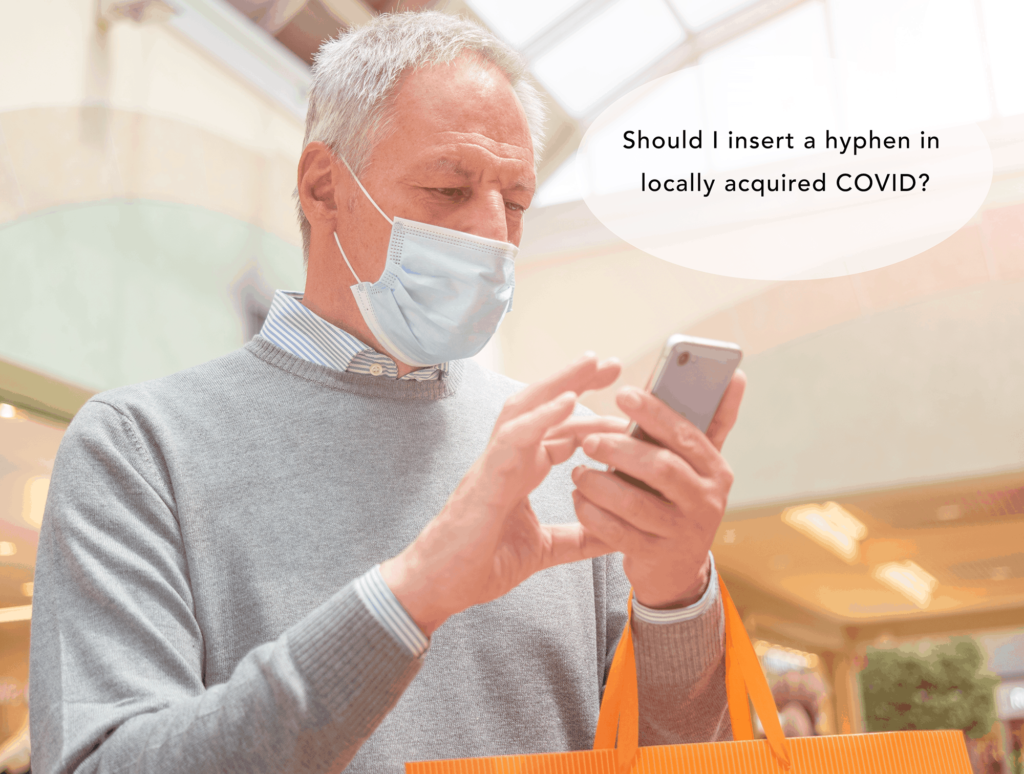Which is that pronoun
✻ By Sharon Lapkin
Do you worry about using which and that incorrectly? Have you asked yourself: Which is that pronoun?
Perhaps you’ve thrown your arms up in the air and decided to use both which and that interchangeably?
Don’t worry, there are likely a lot of people who have done that.
Let’s look at it here with examples.
Which and that can both function as relative pronouns (please don’t lose interest because I used a grammatical term).
Stay with me and I’ll show you the difference between these two words.
But first, let’s break it down and look at what a clause is and what a sentence is.
There are four types of clauses – but there are two things they all have in common.
They all contain a subject and a verb.
A subject is the person, or thing, being described or doing the action.
The verb is a ‘doing word’ that expresses the physical action, a state of being or a mental action.
A sentence is a group of words that has a complete meaning within itself.
It typically contains a subject and a predicate and it conveys a statement,
command, exclamation or exclamation.
The sentence contains a main clause and one or more subordinate clauses.
*A predicate is the part of the sentence that contains the verb saying something about the subject.
Watch this explanation about when to use which and that
Socratica (2015). English grammar basics: That vs. which.
Two scenarios to consider
When you have to ask: ‘Which is that pronoun?’ there are two scenarios to consider.
You need to work out whether the relative pronoun – which or that – is introducing a non-essential relative clause or an essential clause.
1. What makes it essential (that)?
An essential relative clause is one that is essential to the meaning of the sentence.
If we take the essential relative clause out the sentence it will be affected.
In fact, the sentence won’t make sense or be complete without it.
For example – The passenger boarded the bus that was filled with tourists and suitcases.
In the sentence above ‘that’ is introducing the essential relative clause.
It contains essential information about the noun that precedes it.
So if we remove ‘that was filled with tourists and suitcases’, the sentence won’t be complete or make sense.
This is how we know to use ‘that’ and not ‘which’ – the information after ‘that’ is essential to the meaning of the sentence.
‘That’ is an important indicator of an essential clause because it introduces important details to the sentence.
The computer that Jack left at the sports shop turned up at his house today.
What makes it non-essential (which)?
Let’s ask again: Which is that pronoun?
We can answer this by looking at non-essential relative clauses and the role of ‘which’.
Non-essential relative clauses contain added information that can be left out without affecting the meaning of the sentence because it’s considered decorative and non-defining.
For example – I noticed the garden was full of pastel-coloured roses, which were perfumed and lovely.
If we leave out ‘which were perfumed and lovely’, the sentence still makes sense. It might not contain as much information, but it still functions as a sentence.
Sometimes the non-essential clause is in the middle of a sentence, and not the end of it.
For example – I went to see A Star is Born, which starred Lady Gaga, and I thought it was great.
In this sentence ‘which starred Lady Gaga’ is the non-essential relative clause.
It can easily be left out of the sentence without affecting the completeness or the meaning.
Sure it leaves out some interesting information – but it still functions as a sentence.
This is how we know it is a non-essential relative clause and we should use ‘which’ not ‘that’.
The all-important comma
There is one vital detail that we should consider when using ‘which’ for non-essential clauses in sentences.
A comma always precedes ‘which’ unless it is preceded by a preposition (in, to, on, after, for, with, under etc).
For example – The church, which was being rebuilt, was not open for visitors.
Note: it is also okay to use spaced en dashes instead of commas.
For example – The church – which was being rebuilt – was not open for visitors.
A sentence with a non-essential clause will have either two commas framing it or one comma and a full stop.
Today I walked to the market, which was five blocks from my apartment.
Today I walked to the market, which was five blocks from my apartment, to buy some mangos.
Which is that pronoun? Some tips to help you decide
If you’re trying to work out whether to use which or that, try inserting a comma before ‘which’, and if it doesn’t make sense you know to use ‘that’ instead.
The Prime Minister was in a meeting, which required the attendance of the Minister for Health. (Incorrect)
Or try this – The Prime Minister was in a meeting that required the attendance of the Minister for Health. (Correct)
Inserting a comma before ‘which’ shows us that we’re using the wrong word, but if you substitute which for that the sentence doesn’t require the comma and is more meaningful.

Remember, if you insert a comma before ‘which’ does the sentence still make sense?
If it doesn’t, it means you should replace ‘which’ with ‘that’.
For example – The shop that sells fresh flowers is always preferable to one which sells chocolates. (Incorrect)
Or this version – The shop that sells fresh flowers is always preferable to one that sells chocolates. (Correct)
Using which or that incorrectly can change the meaning of a sentence
The Australian Government Style Manual provides the following examples to demonstrate how using which or that incorrectly can change the intended meaning of a sentence.
The research findings that were likely to cause embarrassment were never circulated.
This sentence makes it clear that the research findings not circulated were the ones likely to cause embarrassment.
The research findings which were likely to cause embarrassment were never circulated.
This sentence is ambiguous – were all the findings withheld or just the embarrassing ones?
The research findings, which were likely to cause embarrassment, were never circulated.
It’s obvious that none of the recommendations were circulated.
In the first example, the use of ‘that’ makes it a defining or essential relative clause – so it provides defining, essential information that defines the subject.
But the second example is ambiguous and you shouldn’t write sentences like this.
The third example, with the pair of commas framing the clause, is a non-essential relative clause.
Note the information inside the commas is decorative and not essential to the main point.
I hope you no longer need to ask: Which is that pronoun?
Think of it like the two cups of coffee in this photo.
They appear to be the same, but there are subtle differences that could get you into trouble.

If you drink your coffee out of the cup on the right, you might be bargaining for more than you can manage.
Which is that pronoun?
Relative pronouns were a bugbear of mine when I was studying to be an editor. It can be one of those language conundrums that are difficult to grasp.
But once you’ve got it, you never forget it.
Before you leave
If you’re interested in good grammar, you might also enjoy reading Why you should never hyphenate adverbs ending in ly.
What to pack a punch with your writing? Check out How to make your writing more powerful.
And find out what errors to avoid in 9 common errors every writers should know about.
About Sharon Lapkin
Sharon is a content writer and award-winning editor. After acquiring two masters degrees (one in education and one in editing and comms) she worked in the publishing industry for more than 12 years. A number of major publishing accomplishments came her way, including the eighth edition of Cookery the Australian Way (more than a million copies sold across its eight editions), before she moved into corporate publishing.
Sharon worked in senior roles in medical colleges and educational organisations until 2017. Then she left her role as editorial services manager for the corporate arm of a university and founded Textshop Content – a content writing and copyediting agency that provides services to Australia’s leading universities and companies.







